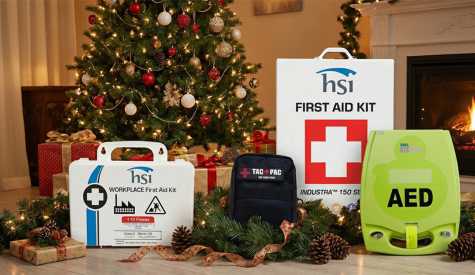Preventing Injuries During the Holiday Season

The months of November through January are filled with festive holidays. Thanksgiving, Hanukkah, Christmas, Kwanzaa, and New Year celebrations provide opportunities to put up decorations, gather with friends and family, share holiday meals, and exchange gifts. But accidents and injuries can quickly put a damper on your holiday plans. Here are some safety tips to help prevent injuries during the holiday season.
Minimize risk of injury when shoveling snow
Snow removal is a necessary task during the winter season, but it can also be a dangerous activity that can cause exhaustion, dehydration, and injury. Prevent back injuries and other issues by:
- Preparing your body by stretching beforehand and taking it slow when shoveling.
- Choosing the right shovel or using a snow blower when available.
- Pushing the snow rather than lifting it.
- Taking frequent breaks to prevent overexerting yourself.
- Listening to your body to recognize any signs of exhaustion or discomfort, such as chest pain or shortness of breath.
Prevent slips, trips, and falls
The holiday season comes with potential hazards that can lead to slips, trips, and falls. Decorations, winter weather, and an increase in activities can create an environment where accidents are more likely to occur. Take proactive fall prevention measures by:
- Making sure walkways, driveways, sidewalks, and other high-traffic areas are clear of snow and other obstacles.
- Ensuring indoor and outdoor spaces are well-lit.
- Being mindful when using a ladder for hanging outdoor lights or other decorations.
- Avoiding using furniture or other items as a step stool when holiday decorating.
- Placing extension cords, lights, and other holiday decorations out of the way of walkways.
Make fire prevention a priority
Part of the magic of the holiday season is being able to enjoy the sparkle of Christmas lights, as well as filling your belly with homecooked meals. But holiday decorations and cooking for small and large gatherings can increase the risk of fire-related injuries and property damage.
In fact, Thanksgiving, Christmas Day, and Christmas Eve are peak days for home cooking fires according to the National Fire Protection Association (NFPA). You can minimize fire hazards by:
- Taking extra precautions when cooking for the holidays, such as storing flammable items (e.g., oven mitts, kitchen towels, etc.) away from the stovetop.
- Ensuring smoke alarms are in working order and keeping a fire extinguisher nearby.
- Following safe practices when displaying and disposing of your Christmas tree.
- Inspecting decorative lights for frayed wires, damaged sockets, loose connections, or broken bulbs before hanging them.
- Turning off holiday lights and blowing out candles before leaving the house or going to bed.
Avoid winter driving accidents
More holiday travel means more drivers on the road. According to the National Highway Traffic Safety Administration, there were 395 fatalities and an estimated 22,325 injuries from car accidents when snow and sleet conditions were present in 2021. Stay safe driving during winter months:
- Practicing heightened awareness and preparedness, including keeping cold weather gear and emergency supplies stocked in your car.
- Increasing your following distance and skipping cruise control when driving on a slippery surface.
- Staying with your car if you’re stopped or stalled.
- Designating a sober driver or using a ride share service to avoid driving while impaired.
Be smart about toy safety
While the joy of gift-giving is central to many holiday celebrations, toys can pose a hazard for young children. The U.S. Consumer Product Safety Commission (CPSC) reports the following toy-related injuries and fatalities for 2022:
- 11 deaths among children 14 years of age or younger involving bouncy balls, stuffed animals, balloons, toy magnets, and a motor vehicle collision with a scooter.
- 209,500 toy-related injuries were treated in emergency departments (76% were children 14 years of age and under).
- Face and head injuries were the most common injuries.
Parents, family members, caregivers, and others should prioritize safety when buying and opening gifts for children. This includes:
- Purchasing age-appropriate toys. Toys with small parts pose a choking hazard, especially for young children.
- Providing safety gear (e.g., helmet) when gifting ride-on toys, such as bicycles and scooters.
- Inspecting toys for wear and tear and paying attention to product safety updates and manufacturer notifications.
- Educating children about safe play practices.
Learn first aid skills to respond to accident and injuries
The holiday season should be a time for gratitude and togetherness. By prioritizing safety, you can ensure your holiday celebration remains memorable for all the right reasons.
That said, accidental injuries are bound to happen even with the best intentions. Be prepared to respond to burns, cuts, and other injuries by taking a CPR, AED and First Aid class near you.


